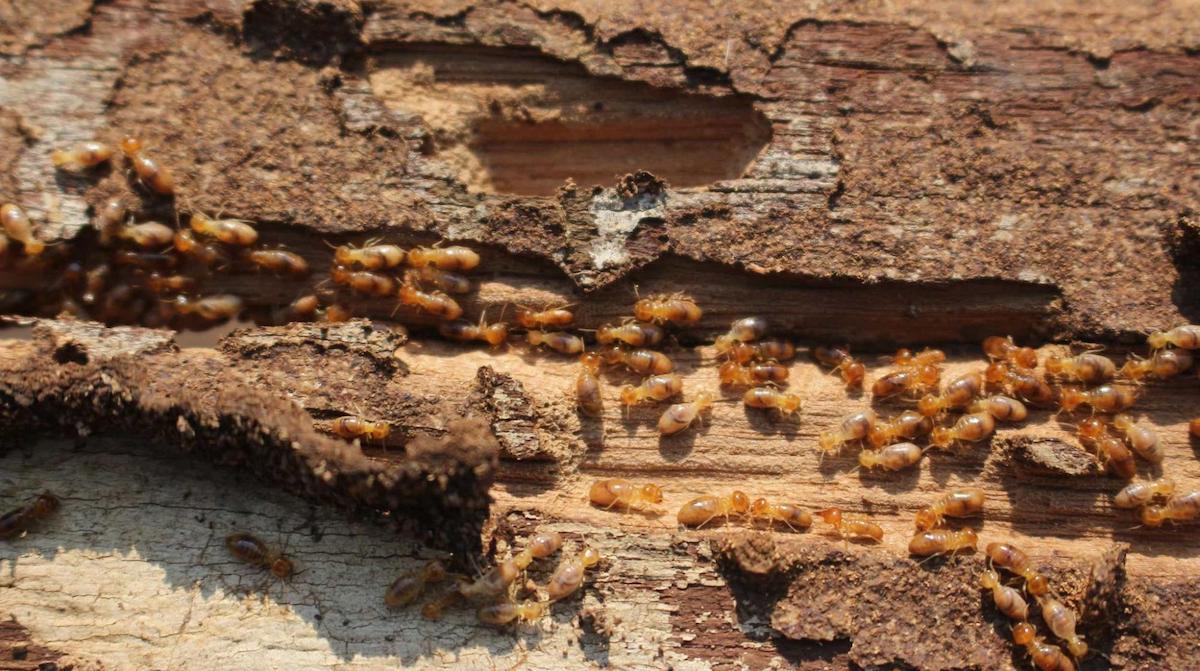Are you ready for termite season? Every year as the weather warms up, termites emerge from their underground colony being to swarm. This is when the flying reproductive termites leave their nests in hopes of starting a new one. A swarm is recognisable by the sudden appearance of hundreds to thousands of these swarmers, usually at dusk.
Termites are excellent at sensing changes in air pressure associated with changing weather conditions. A combination of several successive days of above-average temperatures followed by light rain triggers swarming. Swarms activity varies across Australia, occurring most often in spring and summer.
Knowing when the swarming seasons in your area start is important as it helps you to prevent them from making a new colony in your home. Remember, prevention is the best form of protection.

Here are five essential tips to prepare for termite season that you can do in a weekend:
1. Eliminate all possible food sources.
Termites eat cellulose, an organic fibre from trees and plants. Common places for a colony to form include stumps, rotting logs, basically any wood within reach. You want to starve termites of any tasty sources of non-living wood from around your home’s perimeter. This could be stacked firewood and rotting landscape timbers. Wood mulch is another usual suspect — keep it at least 4 inches from the foundation of your home or switch to an alternative like pine needles.
2. Control high moisture areas.
Termites need a source of water to survive just as much as they need a source of wood. Termite infestations are often linked with moisture problems, so eliminating any leaks or drips is essential. Divert water away from the home with gutters and downspouts, fix any leaky plumbing and ensure crawl spaces and attics have adequate ventilation.
3. Trim vegetation growth around the house.
Heavy vegetation growth near your home helps to create the perfect breeding ground for white ants by providing a source of moisture and cellulose debris. Grab your shears, pruning tools, rake and spade, and get that vegetation aware from the house. Cut back shrubs and clean garden areas regularly. Not only will your garden look better, but you’ll be reducing the chance of termites setting up a colony next to your home.
4. Conduct a termite inspection
Termite inspections are an important step to check for termite activity and should be at least done once a year. You can have your home inspected by a professional pest inspector, which is a certain way to check your home and offer some coverage protection. However, depending on the size of your home, a thorough inspection service can range from $250- $400 depending on your home size and treatment plans can cost between $2000 to $4000. Alternatively, you can learn how to carry out a termite inspection like a professional here. All you need is a screwdriver, torch and methodical approach to check your entire home as part of the Saturday chores.
5. Install termite bait stations
Make the most of your hard work and continue monitoring termite activity throughout the year with bait stations. We’ve created detailed instructions on how to install a termite station, what to do when your baiting system is empty and baiting on active inground stations. Check out our Tips & Tricks to learn more.
Termites cause hundreds of millions of dollars in damage to Australian homes every year. Prepare for termite season by following these five tips and ensure your home is protected.
If you suspect you have termites or they turn up during your inspection, you need to act swiftly by applying bait to eliminate the colony or contact a termite professional.
If you have any questions, do not hesitate to contact us. Our friendly team are termite experts and are happy to help provide advice on your situation.